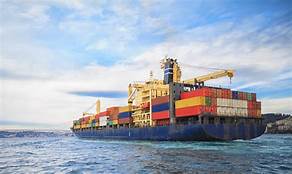Jamaica’s historical economic performance and current reality indicate that all other things considered, the only lever we have to drive significant and sustained increases in growth above the anaemic 1% to 2% that we have managed, at best, over the last two decades is through increases in our net exports.
As a country, we need to decide whether achieving sustained export-led growth is important. If so, we need to ask where it falls within our national priorities. Is a focus on export-led growth even mentioned within our national growth strategy as a major
driver? Or is the strategy only focused on driving foreign direct investments (FDI), growing our hotel room numbers, building out the Special Economic Zones (SEZs), the JISCO investment in St Elizabeth and BPOs?
Over the last 15 years, Jamaica had high levels of FDI of US$867m, US$1,440m, and US$925m in 2007, 2008, and 2015, respectively. GDP growth in these years was 1.4%, -0.8%, and 1.0%, respectively.
In 2016 and 2017, FDI was US$928m and US$888m, with growth rates of 1.5% and 0.5%, respectively. In other words, the highest levels of FDI that we have had in the recent past did not result in significantly enhanced growth, with the positive correlation between GDP growth and FDI being very weak.
Our history has shown us, therefore, that while important, these investments and projects are unlikely to significantly alter our growth trajectory without also having a significant export component, accompanied by deep linkages to the domestic economy.
We hear talk about agriculture and the importance of agriculture. Where is the comprehensive modern, forward-looking agricultural development plan? If we take out the oil-import component from our trade deficit, would the deficit still be as significant? Why do we have such a massive trade deficit that continues to rise? How do we intend to finance our economy going forward? More borrowings? More taxes? Is that not what all governments have done, certainly for the last 30 years or so? What has been the outcome?
This is the real crux of our economic challenge, and even a cursory analysis would suggest that export-led growth should be the major thrust of our entire economic programme. But is it?
Since the Seaga administration in the 1980s, no government has had a specific, focused, targeted policy and supporting programmes as well as the attendant budgetary allocations to grow our exports. The Government in the 1990s undertook an extensive process to develop a national industrial policy (NIP) in which many of us we’re involved. This was a very hopeful time, as the process was led by the minister of finance at the time, Hugh Small, and had an excellent team of technocrats, including Professor Donald Harris, who did exceptional work on defining the options for our exports and elements of an export strategy. His work clearly showed the economic benefits that we would derive from shifting our focus to export-led growth. Unfortunately, this did not materialise’
We have subsequently had the National Export Strategy (NES), which was launched in 2009 and which was developed through public-private-sector partnership led jointly by JAMPRO and the JEA. It had some success, but failed to achieve its goals, largely because of under-resourcing by successive Governments. The second version of the strategy, NES 2015-2019, was launched in 2015.
One of the overarching goals of the NES 2015-2019 is to grow exports at an average of 15% per annum to bring export levels (dollar value) to the pre-recession level of 2008-2009 (i.e., US$5.2 billion). At the targeted rate, export of goods should have got back to US$2.3b by this year. Clearly, this has not happened. Again, this is largely because of a lack of focus on it by the government and inadequate provision of resources to JAMPRO and the JEA to make it a reality.
http://jamaica-gleaner.com/article/focus/20181216/andre-gordon-prospects-export-led-growth-jamaica#.XBcTXJSZ5Mw.email




Leave A Comment